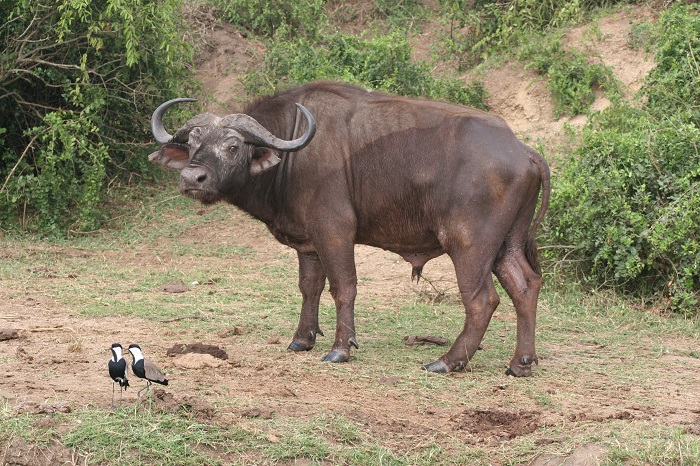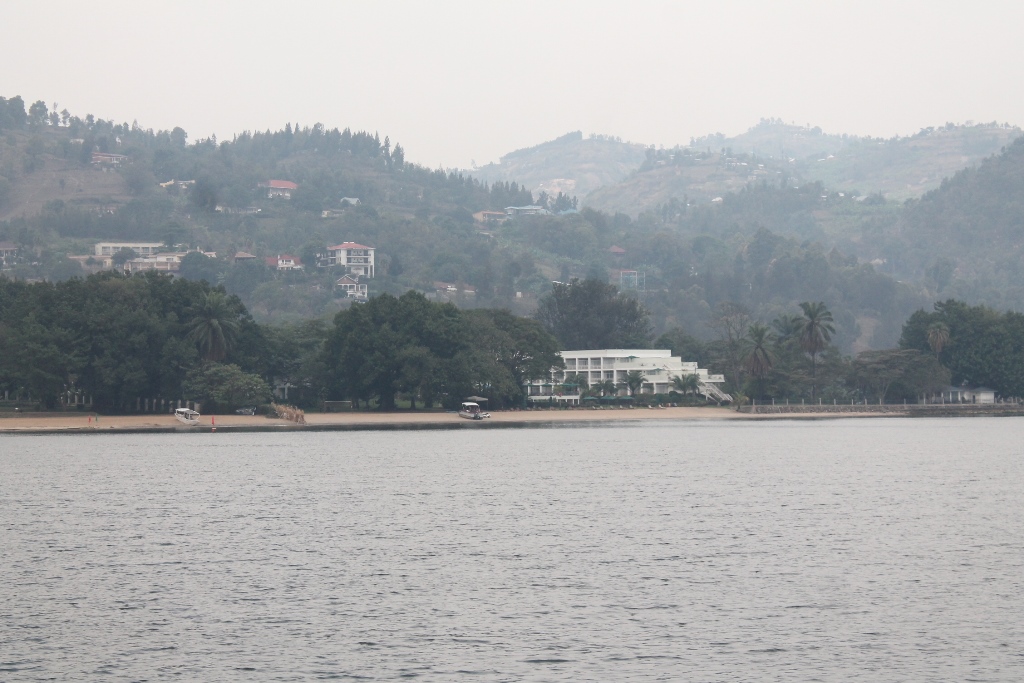
Queen Elizabeth National Park is one of the best places in Uganda to see big game like elephants, lions, hyenas, hippos, crocodiles, buffaloes and antelopes among others.
But it is also the park where safety has been a concern for travelers. Its location on the border with the unstable eastern Democratic Republic Congo does not help matters. For example, in 2019, using Congo as a base, bandits kidnapped a tourist from the park that was released after a negotiated ransom.
Attacks on people by wild animals in Queen Elizabeth National Park have been on the increase, for example an Indian tourist, that perhaps thought the Buffaloes here were as approachable as the domesticated Indian Buffaloes, approached so closely towards a lone buffalo in Queen Elizabeth park and was instantly attacked and killed!
So the question is how safe is, Queen Elizabeth National Park? Well, Queen Elizabeth National Park is quite safe as long as ones exercise caution and follows the park rules. In this article I discuss how to keep safe when on a safari tour in Queen Elizabeth National Park and highlight some of the park rules important for your safety.
Here is how to keep in Queen Elizabeth National Park
Take an armed park guide
If you are on a self drive tour to Queen Elizabeth National Park, it is advised to take an armed park guide for extra protection. The guide knows the behaviors of animals and so he or she would advise and guide on how to approach particular animals, and if the worst comes to the worst, that is in case of an animal attack he or she can use the gun to scare off the animal by firing in the air.
Do not leave the car, especially near bushes
Do not be tempted to leave the car when in the park. Even when the area may look clear of the big animals, a dangerous snake may be a few steps away from you. Only leave the car in gazetted picnic sites within the park, and even then first see that the area and surroundings are free from any animals.
Keep a safe distance from the wildlife
Always keep a safe distance of about 70 meters from elephants, buffaloes, lions, and other big game. 70 meters is considered the comfort zone of most big animals when they will not feel threatened by you.
Do NOT go off the drive track
This is one of the most abused park rules and the cause of most incidents of attacks by animals. The desire to get closer to a distant sighting causes many to go off the drive track. In the process the car gets stuck and travelers are forced to go out of the car, getting exposed to serious danger from animals.
Avoid bright colors such as red
Bright colors like red signify danger for many animals and can trigger an attack. The bright colors will also make you stand out and catch the attention of wildlife. Wear nature blending colors such as green and brown
Do not feed animals. Do not keep fresh food open in the car
Many travelers have the tendency of throwing foodstuffs to animals especially monkeys and baboons. This has embolden the animals that aggress people who carry foodstuffs with them or in the car. Also avoid keeping fresh foodstuffs like fruits and bananas in the open view in the car as these can attract elephants and baboons.
Apply insect repellent
Big game are not the only threat to safety in the park. The mosquito is the number one killer in Africa through causing malaria disease. Apply insect repellent to keep away the mosquitoes and other bugs.
Apply sunscreen
Queen Elizabeth National Park is located along the equator and therefore receives direct sunshine. If you luck melanin ensure you take sunscreen lotion to protect you from sunburn.
Areas of to be more careful about safety in Queen Elizabeth National Park
Ishasha
Ishasha is the remote area of Queen Elizabeth National park located along the Congo border and can therefore be easily accessed from Congo. The area is famous for the tree climbing lions and offers such a prestine African bush experience. Ishasha is the location where the unfortunate incident of kidnapping of tourist happened. The security services have since established a strong standing on the border. However, take caution while here and if you can take an armed park guide for extra protection.
Kazinga Channel
The Kazinga Channel is one of the biggest highlights of the Queen Elizabeth National Park hosting boat cruises from which tourists are able to see crocodiles, hippos and other wildlife attracted to the channel. Take extra caution while close to the channel as hippos leave the water to graze (in the evening through to early morning)
Animals to be very careful about
Buffaloes
Keep a safe distance from Buffaloes, they are senseless killers who do not need a strong reason to attack as long as you get close. They also do not provide any warning signs before attacking and are very good at ambushing from a bush.
Elephants
Keep a safe distance from the elephants especially if they have calves. You should know elephant behavior especially when they are agitated. Unlike buffaloes, elephants will show warning signs before attacking to give you a chance to back away.
Leopards
A leopard with a cub is potentially the most dangerous animal. If you have seen one with a cub keep a safe distance. Leopards like to spend the day in the tree so before getting close or under any tree first scan it to ensure there is no leopard
Hippos
Of the big game, hippos are the biggest killers in Africa. Hippos come out of the water in the evening to graze all through the night and early morning before returning to the water when the temperatures rise. Simply avoid walking near bushes in the evening. Hippos will quickly attack as long as you get close.
2 Comments
Rhona June 23, 2023
Hi, after the horrendous killings near Queen Elizabeth Park how safe is it to do a safari in August?
Replyeatrails June 26, 2023
Hi, the killings took place in a location that is quite far from the park and its surroundings. It is also alleged the “rebels” flew into the mountainous Virunga national park in Congo which is not linked with the Queen Elizabeth National Park. So Queen Elizabeth National Park is very safe. The park is also well protected after an event a couple of years ago when kidnappers from Congo took some visitors in the park for ransom. So to avoid a repeat of this incident the government has the park’s boundaries with the Congo protected even better… Please go on with planning your trip to Queen Elizabeth National Park.
ReplyLeave a comment Cancel reply
Archives
- June 2025 (1)
- March 2025 (1)
- February 2025 (1)
- January 2025 (1)
- November 2024 (2)
- October 2024 (3)
- May 2024 (1)
- February 2024 (1)
- January 2024 (2)
- November 2023 (2)
- September 2023 (1)
- July 2023 (8)
- June 2023 (14)
- May 2023 (1)
- April 2023 (1)
- March 2023 (3)
- February 2023 (6)
- January 2023 (6)
- December 2022 (1)
- November 2022 (1)
- October 2022 (2)
- September 2022 (1)
- August 2022 (1)
- May 2022 (17)
- April 2022 (5)
- March 2022 (7)
- February 2022 (3)
- January 2022 (7)
- December 2021 (7)
- November 2021 (2)
- October 2021 (1)
- September 2021 (2)
- August 2021 (2)
- July 2021 (6)
- June 2021 (1)
- May 2021 (4)
- April 2021 (3)
- March 2021 (2)
- February 2021 (2)
- January 2021 (14)
- November 2020 (2)
- September 2020 (1)
- March 2020 (1)
- February 2020 (1)
- August 2019 (1)
- September 2016 (1)
- June 2016 (1)
- May 2016 (1)

